Why collect mineral specimens and crystals?
Mineral specimens and crystals have been collected since our ancestors saw them. Several prehistoric burial sites contain various mineral specimens and crystals, which were used for religious purposes. Minerals are the wealth of the Earth; each mineral is unique and cannot be imitated by man. During the Victorian age, mineral collecting gained popularity. Kings, Queens, and sovereigns across Europe accumulated minerals at a furious pace, often challenging each other for the premium material specimen available.

Every tremendous European city keeps a collection of mineral specimens within a well-built and secure natural history museum. A perfect example is the well-known British writer John Ruskin, who maintained a vast mineral collection. The US also had several 18th and 19th-century collectors. One of the most famous collectible minerals was preserved by Washington Augustus Roebling.
His collection was the origin of one of America’s most significant mineral collections, which can be found in the National History at the Smithsonian. There are even display shows in Europe and the US. Some famous places are Tucson, Denver, and Munich, which show most of the well-known collectibles.
Why collect mineral specimens and crystals?
Demand for mineral specimens and crystals is increasing due to the wealth being created in Africa and Asia, as well as the opening up of new mining areas located in China, Pakistan, and South America. Mines that vanished for 100 years are now being revived just to extract fine mineral specimens. New regions around the globe are being discovered by mineral dealers with newly discovered specimens and crystals.
What is a Mineral Specimen?
I think mineral specimens are the best-kept secret in the rock shop world. An average person has probably never seen, and probably isn’t even aware of, the thousands of beautiful, brightly colored, completely natural mineral specimens for sale to collectors worldwide. Scientifically, a mineral specimen is a naturally occurring solid formed through some geological processes with a specific chemical composition, definite physical properties, and a highly ordered atomic structure, which is often expressed in the typical outward growth of crystals.
Mineral specimens can have one chemical element or be combined. Some examples are oxides, which are combined with oxygen, sulfides, which are combined with sulfur, and silicates, which are combined with oxygen and silicon. Up until 1995, only inorganic material specimens were considered as minerals. Since then, the definition was modified to include organic substances such as amber or jet.

According to the IMA, the organization that is responsible for tracking and naming new mineral specimens, there are currently more than 5,000 known mineral specimens. Only about 160 can be considered common or at least available, and the rest are very rare. In the industry, minerals are used for energy, paint, buildings, and even in manufacturing. Minerals are cut into gemstones: rubies, diamonds, sapphires, etc. There are minerals from which we get metals, including copper, lead, silver, iron, and gold.
What is a Crystal?
The majority of mineral specimens develop into crystals. They actually come in various shapes and sizes. There are seven different types of crystal formations. Although nature is not perfect, there are many varieties of these shapes. A mineral that is not crystalline is called amorphous. They usually exhibit what is referred to as “habits.” Which means they tend to grow the same in shape, regardless of where they are from. Some habits are drusy, dendritic, and stalactitic or stalagmitic.
Characteristics of Minerals: Minerals are physically occurring matter and can be found on the Earth. They are usually found in dirt, water, and rocks. Some minerals, such as gold or silver, are composed of only one element. Other minerals, such as quartz and calcite, are a combination of two or more components. Minerals always have an identical element makeup. For example, quartz is composed of one part silicon and two parts oxygen. Minerals are typically formed in solid crystals with numerous flat surfaces. For instance, a quartz crystal is in hexagonal shape because of how the atoms of oxygen and silicon have combined together. Usually, oxygen is a component of several minerals.
Minerals that compose oxygen make up almost half of the Earth’s crust. Other widespread minerals are feldspar, mica, and hornblende. The most costly and exceptional minerals are known as gems. Diamonds, emeralds, and rubies are perfect examples of such minerals. Gold and silver are also well-known minerals, and these natural substances are utilized to create fine jewelry. So, these are the characteristics of the specimens, crystals, and minerals.
How are Mineral specimens being recognized?
Minerals are the structural blocks of rocks; there are over 5,000 known mineral species around the world.
- You are most probably wondering how experts have identified more than 5,000 mineral specimens.
- Well, minerals have definite features and properties that allow experts to identify them.
- Minerals can be recognized by their cleavage, shade, patina, resistance, streak, specific significance, and even by their element composition.
Below are the properties of the minerals, together with some examples that help explain such properties. Hopefully, this article will assist you in determining the mineral successfully.

Shade: Several minerals are discovered in certain shades. Also, weathering may vary the shade of the mineral. For example, quartz arrives in different colors: clear, rose, and milky.
Patina: Patina refers to the manner in which a mineral replicates light. Mineral specimens and crystals can be illustrated as dull, greasy, sharp, pearly, smooth, shiny, or luminous. For illustration, quartz has a smooth luster, diamonds are radiant, Talc has a greasy patina, and gypsum has a radiant luster. Fool’s gold or pyrite, as it is sometimes referred to, has a sharp luster.
Streak: Streak is the color of a mineral's powder. Many minerals display different colors when powdered than in solid form. In minerals, a streak can be obtained by dragging an edge across a plate, typically porcelain tile. For example, pyrite has a metallic and yellow-tinted appearance. Yet it makes a black and green streak once rubbed on an uneven surface.
Cleavage: Cleavage takes place when a definite mineral specimen ruptures in an exact way. For example, mica cleaves formed into emaciated sheets while galena cleaves into diminutive cubes. Quartz cleaves into uneven chunks. Feldspar splits into modest steps, and calcite cleaves into diagonal bricks.
Resistance: Resistance is found by how hard or simple it is to scrape a mineral specimen. For example, Talc, the softest mineral specimen identified, can be smashed through the fingernail. Diamond, the hardest mineral, can scrape other mineral specimens but cannot be scraped by them.
Specific Significance: A mineral's specific significance is based on its comparative weight compared to the mass of an equal degree of water. It establishes the solidity of the mineral specimen. Two different mineral specimens may be of similar size, but their mass may be different.
Significance of Minerals: Most of the time, mineral specimen resources are not totally consistent in their composition; sometimes specimens and crystals may be too uneven or loutish in size and too pitiable in grade. So, this article has expressed the reasons of collecting specimens and crystals.
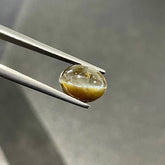
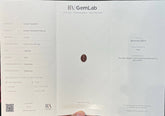
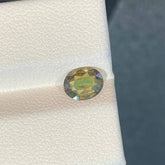
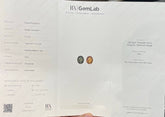

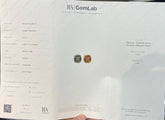
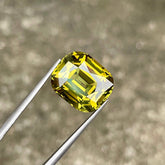
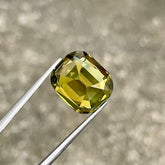

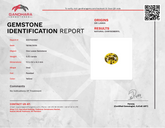
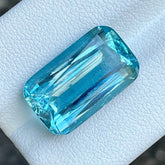

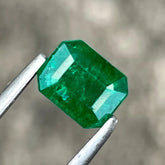



Leave a comment
Please note, comments need to be approved before they are published.